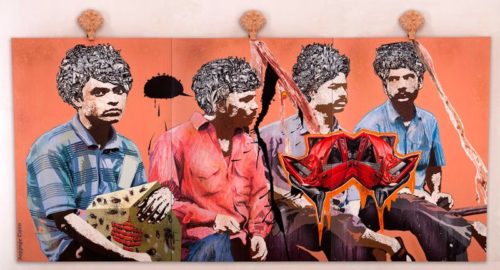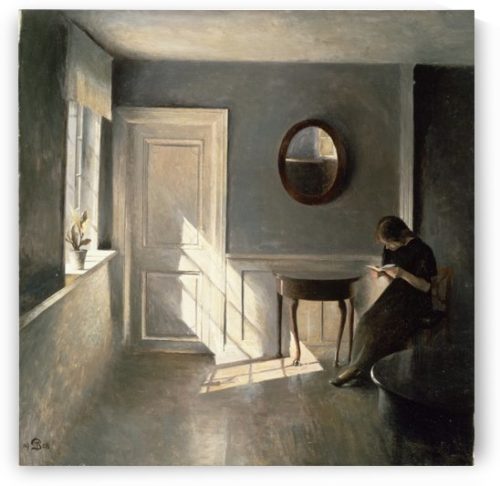
Zbigniew Dłubak, photography.
“It seems that Americans are in the midst of a raging epidemic of mental illness…the tally of those who are so disabled by mental disorders that they qualify for Supplemental Security Income (SSI) or Social Security Disability Insurance (SSDI) increased nearly two and a half times between 1987 and 2007—from one in 184 Americans to one in seventy-six. For children, the rise is even more startling—a thirty-five-fold increase in the same two decades. Mental illness is now the leading cause of disability in children, well ahead of physical disabilities like cerebral palsy or Down syndrome.”
Marcia Angell (The Epidemic of Mental Illness, Why?; NYRB 2011)
“Drugs were around a long time before they were adopted by medicine, and most of the drugs we use today are not the kind you need a prescription for, and do not claim to “medicate” illness. Alcohol, marijuana, opium and its derivatives, coffee, sugar, tea, tobacco are only some of the traditional mind-altering drugs that nearly all cultures throughout history have employed. For what purpose? For the most part, to reduce anxieties, and perhaps the tedium of an unsatisfying life or a stressful occurrence.”
M. Guy Thompson (The Death of Desire)
“In this dark world where he now dwelt, ugly things and surprising things and once in a long while a tiny wondrous thing spilled out at him constantly; he could count on nothing.”
Philip K. Dick (A Scanner Darkly)
“The mythical prototype of the patient of our time is no longer Oedipus but Hamlet.”
Andre Green (Private Madness)
“Crazy as two waltzing mice.”
Raymond Chandler (Farewell My Lovely)
Returning to social media after a month off allowed for a new perspective, of sorts. The most obvious, of many obvious things, was the hostility and aggression. This is not a remotely new observation, but was still striking. The second aspect was that people, the educated classes, are drowning in meaningless assemblages of chatter. Gibberish, endless streams or threads of snarky barking gibberish. And what is most clear is that in previous eras, pre internet, many of the people compulsively commenting and arguing would have been silent (save for discussions with close family members or close friends). But today the old adage of ‘ a little knowledge is a dangerous thing’ has never been more true. Social media has morphed, for many, into a compulsive chatter engine. Its a machine for manufacturing opinion where none organically exists.
“It is this cultural laxity that is anomie–the inability of a culture to provide the individuals within it with consistent guidance (already in the beginning of the twentieth century, recognized by Durkheim as the most dangerous problem of modernity).”
Liah Greenfeld (Mind, Modernity, and Madness)

Juan Francisco Casas
But then the nature of ‘opinion’ itself has changed. And the most pronounced changes have taken place since the advent of the internet. The older sense of opinion was that of a formal judgement, echoing the legal definition of ‘a formal statement by a judge or court of the reasoning and the principles of law used in reaching a decision of a case’. It is now, in popular understanding, a personal view on something, not necessarily arrived at to a degree of certainty, but more an attitude. But then this also reminds me of the recent spate of articles about the colorizing of ancient Greek and Roman sculpture. I have written on this before, but the point is not that ancient sculptures (some of them) were colored with various pigments and in various ways, but that they are now being presented as if painted by a sign-painter or, more likely, a computer generated sort of paint-by-number, for presentation at Disneyworld. Everything in establishment media is today sanded down to the most basic popular conceits (as imagined by the haute bourgeoisie) –to the least offensive and most politically correct (sic) version. The painted sculpture meme is about expressing inclusion, a faux anti-racism, and beneath that, the more significant expression of a hatred toward culture and art.
Liah Greenfeld’s book (Mind, Modernity and Madness) looks at the rise of mental illnesses (specifically the big three of schizophrenia, bi-polar disorder, and depression) and how they relate to class stratification, to illusions of choice under capitalism, and less directly, to the digital environment. After my return to social media (and I returned largely because I felt the need for dialogue about the Covid narrative and the dangers looming for outright authoritarianism in the West) I felt there is, indeed, a massive level of delusional thought among the educated classes. And most depressing of all has been to witness the ‘Left’ and its abdication of critical questioning regards this new authoritarian governance.
“Modern science (namely science since the seventeenth century) is based on the premise that empirical knowledge, experience, offers far more reliable access to the understanding, and ultimately control, of reality than belief, or dogma. Science is only interested in the understanding of empirical, i.e., experiential, reality (what may be experienced). As a social institution—which is one useful way of imagining it—it represents a patterned activity oriented to the understanding of empirical reality and achieving this understanding by the method of conjectures and refutations— specifically, logical formulation of hypotheses, followed by a methodical attempt to refute them with the help of empirical evidence.”
Liah Greenfeld (Ibid)

Bogdan Lopienski, photography.
Now Greenfeld has a compelling chapter on the philosophic implications of the scientific method. Its hugely relevant, I think, for the state of culture today. Her point was about the ‘mind’, and the suspension of the solipsistic prison we would find ourselves in without suspending certain lines of questioning (best reserved for religion or even philosophy). And given the contemporary cult like worship of science (trust the science) it is worth looking at two branches of the American consensus. The first is science, as symbolic and cultural and the second is madness (mental illness and how it is perceived and defined). And cutting across both branches and most everything else is the pathological masculinity of white America.
Mark Dery, about Bush Jr, writes “…He-Ra unilateralism, and damn-the-facts refusal to acknowledge mistakes (even as the body count mounted and billions went down the drain)—all hallmarks of a pathological masculinity that misreads diplomacy as weakness and confuses arrogant rigidity (Freudians, start your engines . . .) with strength. It’s a masculinity founded not on a self-assured sense of what it is, but on a neurotic loathing of what it is not (but secretly fears it may be): a wussy. And it will go to the grave insisting on battering-ram stiffiness (stay the course! don’t pull out!) as the truest mark of manhood.”
Mark Dery (I Must Not Think Bad Thoughts)
The U.S., according to a Zogby poll, remains well behind the U.K., France, and Germany in terms of acceptance of homosexuality. As Dery notes, racist slurs will get you fired, fined, and prosecuted but anti-gay slurs will often only be mildly scolded, and often laughed off. And this touches on the schoolyard culture of hyper masculinity and jock worship. As Stephen Ducat has noted, American men are defined by ‘femiphobia’, a fear of anything soft or ‘wussy’ — young men are identified not by what they are, but first by what they are not (a woman).

Vonn Cummings Sumner
“…in trying to understand the psychology of a culture, it is not enough to know the salient social and political events that have transpired in the life of a people. One must listen to how these events are spoken of by politicians, journalists, celebrities, and ordinary citizens.”
Stephen J. Ducat (The Wimp Factor)
I have often written about and quoted Klaus Theweleit and his book Male Fantasies, so I won’t dig into that again, but its certainly relevant, as always, in any discussion of political masculinity. And this also segues into discussions of popular culture. Mark Dery wrote this back in 2010…
“The zombie is a polyvalent revenant, a bloating signifier that has given shape, alternately, to repressed memories of slavery’s horrors; white alienation from the darker Other; Cold War nightmares of mushroom clouds and megadeaths; the post traumatic fallout of the AIDS pandemic; and, in movies like 28 Days Later and books like Max Brooks’s faux-historical World War Z: An Oral History of the Zombie War, free-floating anxieties about viral plagues and bioengineered outbreaks. These days, visions of a zombie apocalypse look a lot like the troubled dreams of an age of terrorism, avian flu, and H1N1, when viruses leap the species barrier and spread, via jet travel, into global pandemics seemingly overnight (which may be why the Infected, as they’re called in both 28 Days Later and Left 4 Dead, move at terrifying, jump-cut speed, unlike their lumbering, stuporous predecessors).”
Mark Dery (Ibid)

Rafal Milach, photography.
I hadn’t thought of it until now, but the unvaccinated are the new Zombie symbol. Its just that this immunologically classed zombie has merged with religious tropes of salvation and redemption. The unvaccinated are heretics. The infection is already a secondary (or tertiary) issue. In another uncanny bit of prescience, Dery quotes film critic David Skal…“Zombies represent America hitting a very low bottom, as we witness the spectacle of consumer capitalism transforming itself into a feudalistic dance of death.” The new feudalism (which is not quite accurate but captures the feeling of the Covidean real and the cover it provides for the Great Reset and Green New Deal etc etc) was anticipated, as was a hyper pandemic (never mind it isn’t very lethal) and this because one is watching the bourgeois narrative in real time.
I was on a social media thread, commenting on a post by a well known leftist. And it brought to my attention something I haven’t been able to shake since this entire Covid event began; and that is that we are seeing a clear class separation, with the skepticism coming from the working class (see millions on the street in France, Italy, and now even Canada) and the bourgeois embrace of what is hard NOT to call fascism. The lockdowns of healthy people are not quarantine (that is where you segregate the sick) but a form of house arrest. (dictionary definition of quarantine ” a state, period, or place of isolation in which people or animals that have arrived from elsewhere or been exposed to infectious or contagious disease are placed”.) The belief in the government’s good intentions and the mantra ‘trust the science’ are almost infantile in their political naivete. But this belief in the lockdown strategy is not rational, it is more the expression of buried anxieties and fears. Not least among those fears is that these bourgeois true believers should one day become workers like those they have always looked down on, with contempt. The fact that the lockdowns cost sixty million jobs in the U.S., destroyed the livelihoods of millions, threw countless families onto the street, created dramatic increases in self harm, suicide, depression, and drug overdose, is irrelevant to the bourgeois righteous (and to the all too comfortable academic left. And in some cases the all too comfortable non academic left). The implications of the Great Reset, of the further transference of wealth to the very top 1%, the plunder of pensions and state assets, the monopolizing of retail and the destruction of the petit bourgeois businesses is all seen as the cost of being righteous. I mean fascism wasn’t so bad was it?
“Photographs of SS uniforms are the units of a particularly powerful and widespread sexual fantasy. Why the SS? Because the SS was the ideal incarnation of fascism’s overt assertion of the righteousness of violence, the right to have total power over others and to treat them as absolutely inferior. It was in the SS that this assertion seemed most complete, because they acted it out in a singularly brutal and efficient manner; and because they dramatized it by linking themselves to certain aesthetic standards. The SS was designed as an elite military community that would be not only supremely violent but also supremely beautiful.”
Susan Sontag (Fascinating Fascism)

Jitash Kallatnvas
There has been a clear rehabilitation of fascism (via Madison Avenue and Hollywood) going on for the last two decades. And this is worth a much longer analysis than I will give it here, but the appeal of fascism, infused with whatever degree of illusion and delusion, connects to the pathological masculinity issue. But it also connects to the wide spread mental illness in America today. And there is a curious aspect that relates to the ascendence of science as an institutional authority above all others.
“The emergence of science as a social institution (what we call “modern science”) in the seventeenth century and not before had several reasons, the most important being the relative lack of interest in empirical reality, the experiential world, in earlier times. e image of reality that people had then, what they considered the objective world that they inhabited, was the image of a vast cosmos, most of which transcended experience.”
Liah Greenfeld (Ibid)
And a while later Greenfeld adds this…“In other words, nationalism, because of its secular focus, prioritizes the exploration of empirical reality over other intellectual pursuits and reliable (objective and universally valid) knowledge of empirical reality over other types of knowledge. Logic already being the privileged epistemological tool for the development of such knowledge, this calls for, makes imperative or normative, the systematic use of logic and brings about science as a social institution.”

El Greco (St John the Evangelist) 1609.
THEE social institution. Science, now utterly adulterated, remains as the foundational belief system in the contemporary West. And as befits its foundational role, it is rarely thought about very deeply. It is assumed, and as such, it guides belief. The marketing slogan ‘trust the science’ is really a bit of advertising genius, I must admit. For here looms the spectre of ‘wuss’. Don’t be a nancy boy, don’t be girlie man or whatever. And even liberals, even those white Democrats who want nothing to do with Trump and the Proud Boys, are just as caught up in the masculinity matrix as are the MAGA folk. The difference is only one of style codes. The Dem men present as empathic and caring, tolerant (except when you violate ‘the science’) and they embrace the idea, if not the actuality, of sensitivity. The reality is quite different, needless to say. Yet, they are drawn to the elitism of the lockdowns, they defer to the ‘science’ because above all else they know they are not part of that mass of humanity protesting the health passports. They will identify with the system, with the idea of the status quo, and finally, with the police (not the bad apples, of course). On this social media thread I referred to, someone said, ‘Im trying to prevent death’. Even the most sensitive liberal man can take masculine refuge in his belief in science. The science advocate can avoid all Romantic language, all poetics, and just stick to the facts. Facts are masculine; nothing feminine in the factual, in the scientific method where there is an answer for everything. Ambivalence is ‘so gay’.
The leftists on that thread, supporters of the lockdowns, and of the vax passport, have, I realized, fetishized death in a sense, for death means the death of the worthy. I want to prevent the death of the worthy, of those who stave off chaos. The mobs represent chaos. They are the zombie hordes. The liberal Dem men (and women, but more on that below) identify with order, not chaos. It is also death as seen on decades of Hollywood TV shows. It is the death of an actor in one show who pops up alive next season, or next week, in another. The screen habituation is also a strange immortality addiction.
“Mood in all of the depressive states is bleak, pessimistic, and despairing. A deep sense of futility is often accompanied, if not preceded, by the belief that the ability to experience pleasure is permanently gone. The physical and mental worlds are experienced as monochromatic, as shades of gray and black. Heightened irritability, anger, paranoia, emotional turbulence, and anxiety are common.”
Frederick K. Goodwin and Kay Redfield Jamison (Manic Depressive Illness, 2007)

Gottfried Helnwein
The U.S. has seen an enormous rise in cases of clinical depression. In all of the so called major mental disorders. And it’s interesting if you consider the nature of U.S. culture, and its history. Puritans, and their influence remains indelible, focused much energy on denying pleasure. The loss of pleasure is also the keystone for the MDI definition of manic/depression. There is a bit of a self fulfilling prophecy in this. There is an interesting theme here, too, in the cult, or sect like nature of American culture. Probably no other society was so well suited for the techniques of mass persuasion (propaganda). The Puritans themselves were once called a cult (by the Church of England anyway).
There is a convergence, then, of pathological masculinity, the institutional authority (and cultic belief) of science, and a widespread incidence of mental illness. Now, the defining of mental illness is a contested field. And I want to touch on some of the problems with that, but first, the linkage between the social institution of science and masculinity deserves a few thoughts.
Stephen J. Ducat’s book The Wimp Factor, has a pretty cogent short hand overview of how conditions in the 19th century served to shape notions (in the U.S.) of masculinity. Or, rather, of anxious masculinity.
“One of the most frequently invoked specters in the gendered political demonology of modern neoconservatives is “Big Government,” an entity spoken of in explicitly feminine terms. The “National Nanny,” as Ronald Reagan and so many of his disciples have often referred to the federal government (when Republicans are not controlling it), is seen as making Americans weak, fat, and dependent on her bounty. This appellation has been attached to targets as varied as Welfare, the FederalTrade Commission, the office of Surgeon General, and the government of France { } Early industrialization had transformed fathers and husbands into wage laborers, and facilitated a national male migration from family farms and artisanal workshops to factories and offices. No longer were fathers a vivid,
if authoritarian, presence in the lives of young boys. Colonial-era parenting—in which fathers were the targeted readership for childrearing manuals, and were routinely given custody in cases of divorce —was by now giving way to a new set of values and gender norms. Women, who were left behind as the sole guardians of domesticity, took over much of what had been men’s responsibilities, such as the education and moral training of children. There developed, partially in response to these changes, a gendering—male and female, respectively—of “rugged” public life and “soft” private life.”
Stephen J. Ducat (Ibid)

Kurt Kauper
The story is more complex than this, but hardly really different. The attacks on Martin Van Buren in his presidential battle with William Henry Harrison, in 1848, sound remarkably like the attacks on Mike Dukakis, or Walter Mondale. Van Buren was accused of sleeping on a French bed, and putting cologne on his mutton chop whiskers. Ducat adds..“More central to male concern were the command and obedience structures of hierarchical work environments, the dependency, and even the relative security jobs provided, which sharply conflicted with the freedom, autonomy, and risk taking that had been traditionally associated with the masculine sphere. Such changes also reflected another blow to middle-class manliness—the radical decline in male self employment, which went from 67 percent in 1870 to 37 percent in 1910.”
The presentation of self (Goffman) in public life was increasingly a performance quite separate from private life. The public male was one that began, gradually, to take on elements of symbolic heroism and toughness. This escalated later to the manufacturing of leisure time symbolic roles.
“Women were not only excluded from politics but also from the mythologies generated about the two frontiers that constituted the testing ground of nineteenth-century masculinity—the wilderness of the West and Wall Street in the East, locations united in a common ethos involving the rapacious conquest and exploitation of land, resources, and people. “
Stephen J. Ducat (Ibid)
This is still evident today with the gunfighter westerner vs the wolf of Wall Street. Self employment today is around (both for men and women) 6%.

Christer Stromholm, photography.
Men’s sense of worth is almost entirely symbolic today. Sports takes a huge chunk of this symbolism, with American football as far and away the most popular sport (though MMA, if its even a sport, is close behind) — a sport rife with homo-erotic vocabulary and presentation. Also, one marketed with no small amount of jingoism. Metaphors of war are ubiquitous in U.S. popular culture. And most sporting events are infused with war symbolism. Now, I have no figures, or no exact figures anyway, for the correspondence between mental illness and eroding union membership, self employment, or spectator viewership — but I would say there ‘is’ a correspondence. Now the sixties cultural revolution, of sorts, addressed the toxic masculine roles favored by popular culture and Hollywood, and embedded in historical economic forces, and coupled to the anti-war movement, women’s lib, and civil rights, it all served to destabilize an already precarious sense of self in American men. The Sixties did, though, for all the efforts to ridicule it by Madison Avenue, mediate notions of manhood and introduce a questioning of how identities are formed.
“In addition, immigrant workers were challenging native middle-class men for political control of cities,and working-class men in general were making their power felt through the thirty-seven thousand strikes that took place between 1881 and 1905. Another major cultural and economic upheaval was under way—the shift from an abstemious, Calvinist capitalism that emphasized productivity, saving, self-denial, and delayed gratification, to a more impulse-dominated capitalism that valorized consumption, leisure, and the pursuit of pleasure. This change provided the cultural oxygen in which the seductive propaganda of advertising could thrive, which in turn further fueled the appetite for consumer goods. Also shaking the foundation of manliness was a new mental disorder that began to spread across the continent, “neurasthenia,” also called “American nervousness.”
Stephen J. Ducat (Ibid)

Gerhard Demetz
The early 20th century was largely Methodist, but the Puritan and Calvinist backdrop was always there. And the advent of ‘American nervousness’ saw a gendering treatment plan. Men were advised to take trips, be outdoors, exercise and stimulate themselves. Women were told to rest in bed. A return to their proper roles, in other words. There lurked a fear of femininity in this, as Ducat notes. What made WHITE men superior, the technical know how, the intellectual curiosity that drove Capitalism, also threatened their masculinity for the luxury and comforts earned by their superiority, now became the engine of their increasing ‘nervousness’ (they were becoming rather too much like women). Most significantly, this cultural anxiety about masculinity resulted in a massive increase of fraternal lodges (Free Masons, the Tribe of Ben-Hur {really} and a dozen others, including, actually, the Boy Scouts for younger men). Men were again to undergo rites of initiation, however ersatz. Manhood was in the grip of metaphor.
Ducat rightly notes the election (and persona) of Teddy Roosevelt as the lodestar for femiphobic America. Roosevelt moved from New York City to South Dakota (where he bought a ranch) in order to burnish his masculine credentials. It is reasoned that had he stayed a New Yorker he would never have won another election. Bush Jr. followed this example to the letter. Race enters this discussion here for Roosevelt was an enthusiastic supporter of eugenics. He feared what he called ‘race suicide’ by the girlie men of his time. Already lower birth rates among white westerners was setting off race alarms. So would go the twentieth century, in terms of the masculine theme. The white anxiety expressed in electoral results. Ronnie Reagan (TV cowboy), Bush Jr (correcting for his family wimp factor), John McCain, who lost to a black man — but one well cast for the clashing anxieties of bourgeois guilt and a new wave of urban dislike for NASCAR flyover states. The masculine theme came to involve counter urges and doubled anxieties.
But the purposes of this post, I think the interesting question has to do with what I see as the now complete unravelling of the bourgeois mind.

Andrzej Jerzy Lech, photography.
I have written before about the transformation of Freudian psychoanalysis from its radical origins in Vienna, to the adjustment therapy it became when it landed on the shores of North America. It was medicalized, firstly, and the U.S. penchant for sociological solipsism fitted nicely with the idea of ‘making your life work’. Therapy, the therapy culture, in the U.S. today is one of sort of generalized and usually vacuous advice to stem off mild depression or anxiety. For anything more debilitating, drugs are prescribed. The numbers for Americans on antidepressants is just staggering (37 million). And I suspect that’s a lowball figure. I have written on this blog, for years now, as I sensed a coming crisis in American consciousness. My perspective has been, often, or usually aesthetics, or it involves aesthetics, because I believe the aesthetic realm of any culture is always the most revealing. And that aesthetics, in a sense, bleed into everything else anyway. The Covid narrative is so rife with contradictions, and especially the state push for vaccination, of ‘everyone’ (Australia now in lockdown again, the UK, the U.S., Israel, Canada, New Zealand, France et al) which literally makes no sense even within the logic of those advocating for it that one can only look at the mental health of those in support. Now across France there are massive protests against the vaccine passport. And elsewhere, too. And this is, apart from all else, simply a question of resistance to a level of surveillance and monitoring that is unprecedented. And yet, countless self identified left publications and voices are in full support. How is this possible? The working class is far less indoctrinated than the upper bourgeoisie, I think that is pretty clear. The voices of the working class can be heard on the streets of Paris right now. But, there are contradictions within these observations, too. And some of this is what the Aesthetic Resistance podcasts have been trying to examine and analyze.
“Goodwin and Jamison tell their readers that the interest in biological psychiatry, the reputation of which suffered from association with Nazism after World War II, and which revived in the late 1960s, “has grown enormously in the past decade as the computer-based and molecular tools available…have multiplied exponentially.” They stress that “attempts to comprehend the brain’s role in mania and depression…began in earnest as clinically effective mood-altering drugs began to appear in the late 1950s and early 1960s.”
Liah Greenfeld (Ibid)

Laurits Andersen-Ring
I should note here that the computer modeling and the new DNA research feels decidedly Nazi like, if you ask me. And then this…
“Gradually, the genetic evidence became too compelling to ignore. Recent advances in the molecular genetics of several neuropsychiatric diseases, particularly the discovery of linkage and association of deoxyribonucleic acid (DNA) markers with the bipolar subtype of mdi, appear to re-affirm the older evidence [that mental illness runs in families]. If, as expected, particular gene variants are definitely implicated in manic-depressive susceptibility, better understanding should follow…the new discoveries [to be made] could result in new diagnostic tests and improved treatment methods.”
Frederick K. Goodwin and Kay Redfield Jamison (Ibid)
The fact that a few pages earlier the authors admit its all but impossible to define schizophrenia or even bi Polar disorder, doesn’t stop them from seeing gene explanations for these states. And this feels like those who run the asylum (metaphorically speaking) are the insane ones. America as a large scale production of Marat/Sade.
As Liah Greenfeld observes…“The use of the future tense and subjunctive mood in this scientific text on manic-depressive illness somewhat diminishes the impression of the sobriety which would fit the genre—or the subject.”
Ya think? It warrants mention that such promises have been in existence for thirty years at least. And billions of dollars have gone into gene research. And this mirrors the new bio tech emerging market that sits at the heels of the Covid narrative. The vaccine is, after all, gene based. No wonder so many people are hesitant (a very popular word at the moment) to be vaccinated. There is an acute stunning hubris in the air right now. You see it with the clownish Jeff Bezos, he of the cowboy hat (!) and space program. You see it all the time with Bill Gates, whose billions have gone most into the rehabilitation of his image and the rewriting of his own history. And you see it across the board in the social institution of science altogether. With regards to mental illness there is no answer regards biological heterogeneity, nor any understanding of the developmental aspects in such diseases. And this all to determine the causality of normal or abnormal behavior, terms which are decidedly unscientific and vague.

J.H. Engstrom, photography.
And this is perhaps my point, finally. The massive increase in diagnoses of mental health disorders, especially depression, and bi-polar disorder, but also autism and schizophrenia and eating disorders etc… this massive increase is evident in all classes, really. But not all classes have access to diagnosticians. Not everyone can see a therapist of shrink. And certainly not everyone can pay for one. Still, the madness is felt across all classes and it is strikingly evident in the heads of global NGOs and health care institutions, and in government. I mean the U.S. has a president well into senility just now. But I would not characterize Boris Johnson as a paragon of mental stability. Or Macron or Modi or Trudeau. These are mad men and unbalanced fantasists. They are also corrupt, and morally compromised.
There is an assault on the working class, on children, and on the poor. There are deeply misogynistic aspects to all the transhumanist rhetoric and one cannot but feel the anxiety that runs like an electrical current through the voice of every talking head one hears on corporate news outlets. The United States is run by white men crippled with masculinity panic, ethically adrift and there is the smell of bad faith and a silent terror in their eyes. Zuckerberg on his idiotic electric surfboard, holding an american flag, and having it videotaped may stand as the avatar for billionaire insanity right now. The culture is petrified and caught in an endless cycle of repetitive compulsions. And the ruling class are perhaps, all of them, clinically borderline. And likely all suffer depression.
The transformations into modernity could be seen to start with 16th century England. Greenfeld notes the translation into the King James Bible, and modernizing of the English language. And I’m fine with that. This is to be a topic of the next blog post, I suspect. And I say that because to read Donne, or Shakespeare, is to hear the voices of an interior life that seems to have largely gone missing today. Burton’s Anatomy of Melancholy is another useful place to start. The reading of such work is a form of deep meditation, and its crucially needed just now. And all these touch on the outer borders of sanity, and of epiphany. There is a crucial difference in definitions of schizophrenia and depression. Depression is tied to self loathing. And self loathing is the epitaph of western society.

Atta Kim, photography.
The unreality so often described by schizophrenics is itself, not uncommon. Andre Green made an interesting remark…“Freud assumed that the basic function of the psychic field was the lowering of un-pleasurable tension. Hartmann’s ego psychology assumes that the basic function is adaption, an assertion not contradictory to Freud’s, though implying a shift in emphasis. The British School considers that growth is this basic function. I suggest that this basic function is representation. This should be understood in a very broad sense, as including representation of both the external and the internal world.”
Andre Green (The Borderline Concept, Private Madness)
I like representation, but the point is that madness is not a disease you catch. There is no bacteria, or…uh, virus. The ruling class simply owns the means to disguise its madness. Representation is theatre, in this sense. It is the ‘space’ that precedes psychic formation. It allows for that formation. Today’s unreality, the propaganda of the state, of advertisers and NGOs, this is the stuff that makes up the metaphors people use to navigate reality. To help define themselves in some sense.Buddhism suggests its all an illusion, and it is, except when it isn’t. The old proverb about before enlightenment when looking at a mountain it is just a mountain you see. When on the path to enlightenment you look at the mountain and see much more. It is many things. When you reach enlightenment and look at the mountain, it is just a mountain again.

Young Teddy Roosevelt, photo op.
-To donate to this blog use the paypal button at the top. This helps keep Aesthetic Resistance podcasts operative as well. https://soundcloud.com/aestheticresistance

Theatre is being strangled along with everything else. Observe how many soi-disant theatre artists have not just succumbed meekly & uncritically to this madness and blatant fraudulence, but are now positively welcoming and assisting the coup it serves to cover:
“Charles McNulty
@CharlesMcNulty
·
Aug 18
Theater is a public art form. Actors who don’t want to get vaccinated don’t have to get vaccinated. But they need to step off the public stage.”
https://twitter.com/CharlesMcNulty/status/1428013371664715782
(McNulty’s Twitler bio: “LA Times Theater Critic. Former Village Voice theater editor, Obie chairman and director of Brooklyn College’s grad dramaturgy program.
Ostracised actors, segregated theatres, and barely a peep of protest from anyone. Karriere über Alles. We have been here before.
Imagine how Pinter and Heiner Müller would have responded to all this. Or Beckett. Or Brecht.
Theatre is being strangled along with everything else.
“Charles McNulty
@CharlesMcNulty
·
Aug 18
Theater is a public art form. Actors who don’t want to get vaccinated don’t have to get vaccinated. But they need to step off the public stage.”
https://twitter.com/CharlesMcNulty/status/1428013371664715782
(McNulty’s Twitler bio: “LA Times Theater Critic. Former Village Voice theater editor, Obie chairman and director of Brooklyn College’s grad dramaturgy program.”)
Imagine how Pinter and Heiner Müller would have responded to all this. Or Beckett. Or Brecht.
i thought of pinter when i read this. Where are the Pinters and Mullers?? Ive not heard a single peep from any playwright in the US or Uk. Eric Clapton is about the only artist, and van morrison, that i have heard.
This is what’s been kicking my ass too. I’ve even tried to put out feelers for theater/dance artists who want to dissent, but are scared, and NIL, nada, nothing. Not saying my feelers got too far, but the wall of silence is disheartening.
A good thread by Hiroyuki Hamada:
https://twitter.com/HiroyukiHamada/status/1429795325955526658
(Btw, please feel free to delete one of the duplicate posts at the top of this thread. My first comment took a long time to go through, and I thought it had vanished.)
On Aug 24, (minutes before I posted the Hiroyuki Hamada tweet), I posted a longish comment about the situation of theatre actors under the “covid” regime, and it still hasn’t turned up. My first comment also took at least a day to appear, hence that double post at the top. No big deal in itself, but you might be losing other comments that way.
sorry about that. It does happen with this system. Ill look into fixing it.
Re: the lack of any covid scepticism being expressed in the media – along with the nod to Clapton and Van Morrison, it is striking that true dissent is coming from sectors not regarded as “political” and I can only assume that what passes for “political consciousness” in this age has become so degraded, co-opted and pre-empted that it was perhaps inevitable that this would be so. Under present conditions, the last place to look for any insight and awareness is the “Left” sites. The World Socialist Website is particularly noxious. And so the “regular people in the street” have a far greater awareness of what is happening than any academics, writers, group leaders etc. The most sobering thing of all has been the lockstep monolithic nature of the media coverage of covid where no hint of critique has crept in expect through the occasional gripe about “conspiracy nuts” who are invariably labelled as “the Right”, “the Far Right”, “the Fascists” etc.
The Power of the Powerless essay – Václav Havel
https://www.nonviolent-conflict.org/wp-content/uploads/1979/01/the-power-of-the-powerless.pdf
https://youtu.be/DtmwtjOoSYU?t=3093